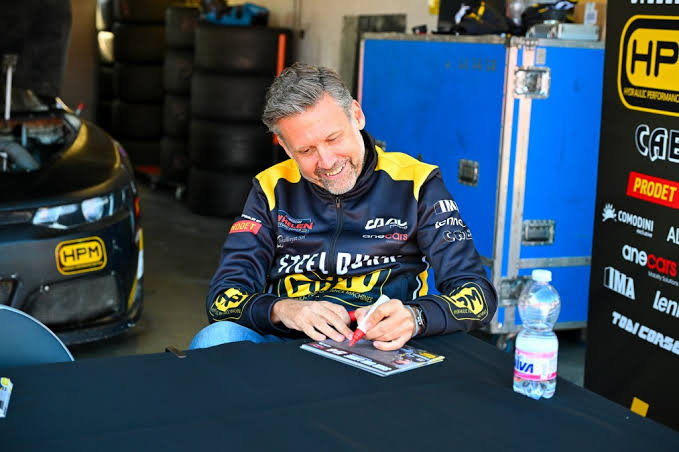The Aging Curve in NASCAR: Why Drivers Decline by Their Mid-40s
In NASCAR, the sport where speed, precision, and split-second decisions determine the difference between victory and failure, physical and mental sharpness are paramount. While there are examples of drivers competing well into their 40s, it’s rare to see a top driver maintain peak performance at this age.
This decline in performance, which often becomes evident by the mid-40s, is a complex phenomenon influenced by various physical, psychological, and technological factors.
Physical Limitations and Endurance
NASCAR may not seem as physically demanding as some sports, but the reality is quite the opposite. Drivers endure high G-forces, heat, and physical stress for hours on end during races.
The wear and tear on the body over time can take a toll, particularly on older drivers. Endurance, reflexes, and hand-eye coordination naturally decline as one ages. Drivers like Jimmie Johnson and Jeff Gordon, two of NASCAR’s most iconic figures, experienced noticeable dips in performance as they neared their mid-40s.
In his prime, Johnson dominated the sport, winning seven championships and securing his place among the all-time greats. However, as he reached his mid-40s, Johnson struggled to compete at the same level, prompting his retirement from full-time racing at 45.
Gordon’s career followed a similar trajectory; despite maintaining a high level of performance into his early 40s, his win rate and top finishes began to dwindle, and he retired at 44. These cases highlight the physical limitations that even the best drivers face as they age.
Mental Sharpness and Reaction Time
NASCAR drivers are required to make split-second decisions at speeds of over 200 mph. Reaction time, decision-making, and focus play crucial roles in race outcomes.
As drivers age, their reaction times naturally slow down. For older drivers, processing information on the track as quickly as they did in their younger years becomes a greater challenge.
Moreover, NASCAR racing is not only physically taxing but also mentally exhausting. Managing strategy, fuel consumption, tire wear, and navigating rival drivers can overwhelm older racers.
The grind of a long NASCAR season, which spans over 30 races, can mentally wear down even the most seasoned professionals. This was evident with drivers like Dale Earnhardt Sr. and Darrell Waltrip, both of whom experienced a decline in their later years.
Technological Advancements
As NASCAR evolves, so do the cars and the technology surrounding them. This shift has affected older drivers, who may struggle to adapt to new equipment and rules as quickly as younger racers.
For example, the introduction of NASCAR’s “Next Gen” car brought significant changes to the sport, including modifications in aerodynamics, tire technology, and handling. These advancements often favor drivers who can quickly master new technologies—typically, younger competitors who grew up with these innovations.
Jimmie Johnson, who ruled the NASCAR Cup Series with five consecutive championships between 2006 and 2010, found himself struggling with the new changes as they arrived later in his career.
Similarly, Jeff Gordon, once at the forefront of the sport’s technological evolution in the 1990s, found himself less dominant when new systems and rules were introduced.
Increased Competition and Younger Talent
As drivers age and begin to decline, younger drivers enter the sport, hungry to make their mark. NASCAR is filled with ambitious young talent eager to prove themselves on the big stage.
Drivers in their 20s and early 30s tend to have faster reflexes, greater endurance, and an ability to push the limits of the car’s performance. For aging veterans, competing against this new wave of talent becomes an increasingly difficult task.
Moreover, younger drivers are often more adaptable to technological advancements and rule changes. NASCAR’s current star drivers, such as Chase Elliott, Kyle Larson, and Joey Logano, have risen quickly through the ranks, and they are often more suited to handle the modern demands of the sport.
This influx of youthful talent puts added pressure on older drivers, who may no longer have the physical or mental sharpness to compete at the highest level.
The Few Exceptions
While most drivers experience decline by their mid-40s, there are rare exceptions. Kevin Harvick, for example, has been able to maintain a competitive edge into his late 40s, continuing to win races and contend for championships.
However, such cases are the exception, not the rule. Harvick’s consistency is a testament to his physical conditioning, mental toughness, and adaptability, but even he will likely face the inevitable decline that comes with age.
The Transition to Retirement
As drivers approach the end of their careers, many begin transitioning to other roles within NASCAR, such as team ownership, broadcasting, or mentoring younger drivers.
Jeff Gordon, after his retirement, became an integral part of Hendrick Motorsports, while Dale Earnhardt Jr. transitioned into a successful broadcasting career.
Retirement is often a bittersweet moment for these drivers, who have spent their entire lives competing. While their passion for racing never fades, the physical and mental toll, coupled with the intense competition from younger drivers, eventually makes it difficult to continue at an elite level.
NASCAR, like any other professional sport, demands peak performance from its athletes. While some drivers manage to compete into their mid-40s, the majority experience a noticeable decline by that age.
Physical endurance, mental sharpness, and the ability to adapt to technological advancements all play a role in this decline. As younger drivers enter the sport and NASCAR continues to evolve, it becomes increasingly challenging for aging drivers to maintain the high level of performance required to stay competitive.
For fans, this cycle is part of the sport’s enduring appeal. While it’s difficult to watch legends of the sport slow down and eventually retire, their legacies are carried on by the next generation of drivers, ensuring that NASCAR continues to thrive for years to come.
















































